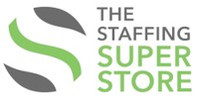Staffing Year-End Checklist and Planning Guide 2018-2019

Checklist
ADMIN
- Schedule Purge and shred old files
- Order Bankers boxes/file storage boxes
- Evaluate Fling System - Purge and organizing all files YTD leaving the last few weeks of Dec
- Start Prepping for reconciling, submitting expenses, mileage records, etc.
- Complete inventory early, restock and get your order in/approved before vacations start.
- AR – Get paid before the year ends and people start disappearing
- AP – Lock down cash flow for the following quarter
- Clean and maintain equipment, update maintenance agreements
PAYROLL AND BENEFITS

- December 1, 2018: Required W-4 reminder
- December 31, 2018: Final date to process payroll in 2018
- January 31, 2019: Forms W-2 and 1099-MISC due
- February 15, 2019: Confirm W-4 information for exempt employees
- April 2, 2019: Forms 1095-C and 1094-C due to IRS
- Misc./Other Important Deadlines
- Update Employee Contact Information
SALES & RECRUITING

- Order promotional items to have in time for the new year, avoid the busy season lead time and new year price increases
- Determine needs and set budgets for Advertising, Associations, Conventions and Trade-show expenses, etc.
- Market Cap, Market Share and Sale Targets – Examine growth trends and rates of change vs. goals and expectations for 2019
- Align Sales and Recruiting Teams on 2019 Pay Rates and Bill Rates addressing hard to fill positions, minimums on qualified candidate pool, Sale and Recruiting Campaigns, etc.
- Review and Update Customer and Temporary Employee appreciation plans
- Sales Cycle and CRM data – Evaluate and realign Rate Increases, Pre-qualifying processes, Customer Life-cycle, Retention Rates, New Account growth, Expanding Existing Opportunities, Reactivations, Etc.
- Recruiting Cycle and ATS data - Assess and apprise Pre-qualifying processes, Employee Life-cycle, Retention Rates, New Account growth, Expanding Existing Opportunities, Reactivations, Etc.
TECHNOLOGY

- Start with a security checkup
- Evaluate and test your website – Ensure all links are working properly and content is current and relevant
- Back up data and evaluate storage levels
- Review Software and Hardware updates
- Implement Sales & Recruiting Tools and updates
- Clean, maintain update equipment
- Evaluate Filing and Naming Systems
SAFETY & COMPLIANCE
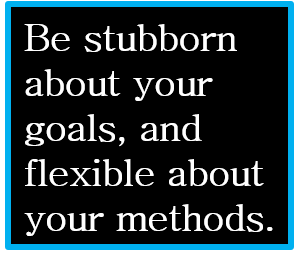
- Review workers comp and insurance checkups and renewals, prepared for audits
- Complete Safety Review of 2018 and set 2019 Goals
- Signage updated - Minimum Wage, Local, State and Federal Labor Laws 2019 Min Wage Chart
- Prep for year-end file shifts and purges – See Link for updates and Record Keeping Requirements from the Dept. of Labor
- Verify Vendor Information and send 1099 forms to those with spends over $600 by January 31
- Prepare for ACA Annual Reporting
- 50 or more employees—complete and file forms 1095-C and 1094-C
- Fewer than 50 employees (self-insured)—complete and file Forms 1095-B and 1094-B
- Fewer than 50 employees (fully-insured)—insurer is responsible for filing on behalf of the employer
- Fewer than 50 employees (no insurance)—reporting is not required
- Update Your Retirement Plans - Modifying an existing match calculation, Changes to earning or deduction codes, Changes to existing or previous providers, etc.
TEAM

- Celebrate this Year’s Accomplishments
- Review and Update Employee Appreciation Plans and Contests
- Goals & Expectations - Gather Feedback, Examine 2018’s Wins and Loses, Set 2019 Goals
- Examine Growth Trends and Plans for Hiring
- SWOT Analysis – Strengths, Weaknesses, Opportunities and Threats
- Year-end employee meeting
- Modernize your Office - Explore new types of decorating and layout to build Teamwork and Collaboration
- Relax & spend time with important people in your life Electronic Code of Federal Regulations
Planning
Clarity – Starting with the End in Mind

Brendon Burchard's book, High Performance Habits: How Extraordinary People Become That Way, has an excellent process on Seeking Clarity first, Raising Necessity and Increasing Productivity. You can download the book for free and here is the Clarity Chart.
Tony Robbins has an amazing Planning System called the Rapid Planning Method or RPM.
Brendon and Tony are experts to help you get clear on what you want, which is why we defer this section to them. Once you have a clear direction set, we can help you with the parts that intersect with your day to day in Staffing.
Planning – Finish the Year Strong, with no incomplete tasks and momentum by using a 120-day calendar.An effective plan will look out 120 days or the current month plus the next 3. Let’s face it, the current month you’re in is almost over as it starts, as it relates to outcomes. The majority of whatever is going to show up this month is typically based upon activity from 30, 60 and 90 days ago.
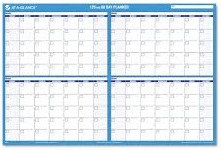
The average sale cycle involves approximately 8 interactions before closing. Assume you have an interaction booked once a week, you’re still looking at two months out before closing. Using that average as a basis for planning, the month you're currently in and the following month are almost completely established. Therefore, in order to accomplish real change, you must be diligent towards execution of this months must do results that will show up 90 to 120 days out, hence the reason for the 120-day calendar. A 120-day, wall mounted, Dry Erase Calendar is inexpensive and a great place to start.
Blocking - Block out holidays, vacations, anniversaries, doctor appointments, parties, events, trade shows, corporate meetings, etc. Unless you put it on the calendar, it won't get done. That applies to your exercise and time with your family.
Block times for specific activities and stick with the plan. Turn your calendar into a bunch of blocks, and put activities into those blocks. Whatever is not planned, you don't do. If you want free time, plan it.
When you have to book meetings your responsible for, group them into blocks as well. Schedule Once is a great tool to eliminate the back and forth when trying to schedule meetings. A simple link in an email will take them to your availability calendar and allow the recipient the ability to book whatever time works best for them. The example below shows the green time slots as being available.
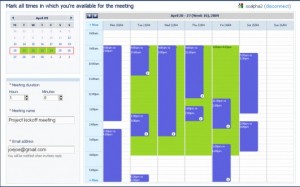
Block time for email. Below is an example from Tim Ferris’s blog The 4-Hour Work Week, in which e-mails are only checked three times a day. Tim also suggests that you change your auto reply to state “I will only be checking e-mails three times a day to be more effective and efficient, in order to serve our clients better.”
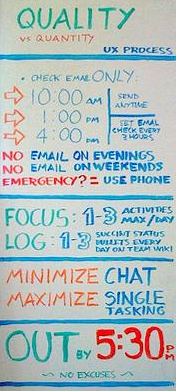
Limit Meetings to 30-minutes and Calls to 10-minutes
Never accept a meeting or a call without a clear objective. If someone sends you an invite without objectives, politely decline the meeting and ask for an invite with objectives clearly stated. This forces some thought and clarity from the organizer, thus allowing a possible resolution via e-mail to eliminate the meeting altogether.
10-minute calls are great for initial connections and are super effective because of the time constraints, allowing people to get straight to the point.
30-minute meetings with assigned time slots for each objective will keep the meeting on time and productive, as long as you are diligent with timekeeping and managed a transition to the next topic.
Setting the groundwork for transitioning to the next topic is established during the beginning of the meeting, when you assume timekeeping duty and informed the attendees that you will letting them know when there is 2 minutes left on each discussion. In other words, when I say we have 2 min. left, that means it is time to wrap up and transition to the next item on the agenda.
Transition time – Lack of transition time creates more stress than you may realize. It takes on average 7 to 20 min. to refocus and reengage on a task once you have been interrupted. Wrapping up one task and diving right into another does not allow the mind and body to readjust to the next task. Allotting yourself a 10 min. break to get up, walk around, stretch, do something non-work related, gives your mind a break and allows a fresh perspective on your next task, versus allowing everything blended and blurred together into one big day long stress mess.
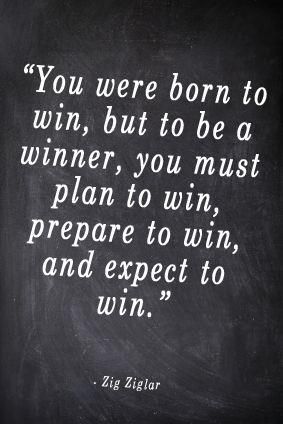
Schedule 50 min. to 2-hour Blocks of Uninterrupted Time - The one or two critical items that must be done each day, have scheduled before 11 AM. If you can get one or two critical tasks done each day before 11 AM. You will be amazed at what you can get done over the course of a month. It usually takes people a few hours to digest whatever emergency e-mails and calls met them at their desk or barged through their phones, meaning it won’t become your issue until 11 AM.

Stretch Goals
- Book the 1st two weeks in Jan with quality appointments
- Finish ALL Unfinished Business by eliminating or delegating every unfinished task
- NO carry overs from last year that are not reassigned, eliminated or scheduled
Sources:
IRS Tax Calendar for Businesses and Self-Employed:
IRS Tax Calendar for Businesses and Self-Employed Current Month:
US Department of Labor Recordkeeping Requirements under the Fair Labor Standards Act (FLSA) PDF
https://www.dol.gov/whd/regs/compliance/whdfs21.pdf
Electronic Code of Federal Regulations Title 29 → Subtitle B → Chapter V → Subchapter A → PART 516—RECORDS TO BE KEPT BY EMPLOYERS
Savings Links, Tips and Other Resources:
- Buy what you need for Jan. and Feb. in Dec., incur the costs this year and lighten expenses for the slowest months and Quarter of the year
- Lock in 2-year deals for current and next years’ service…Prices are only going to increase
- 120 Day Calendars
- Shredder Service
- Banker/Storage Boxes, Filing Cabinets – Office Supplies
- Wage and Hour Signs
